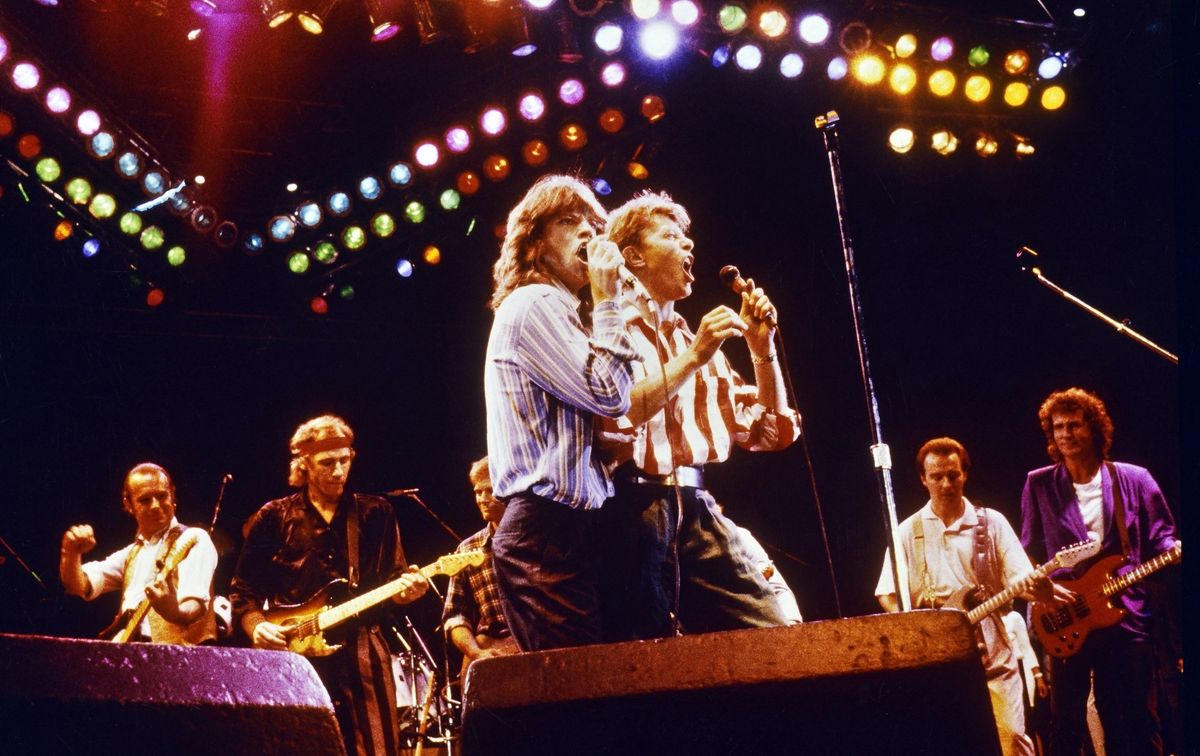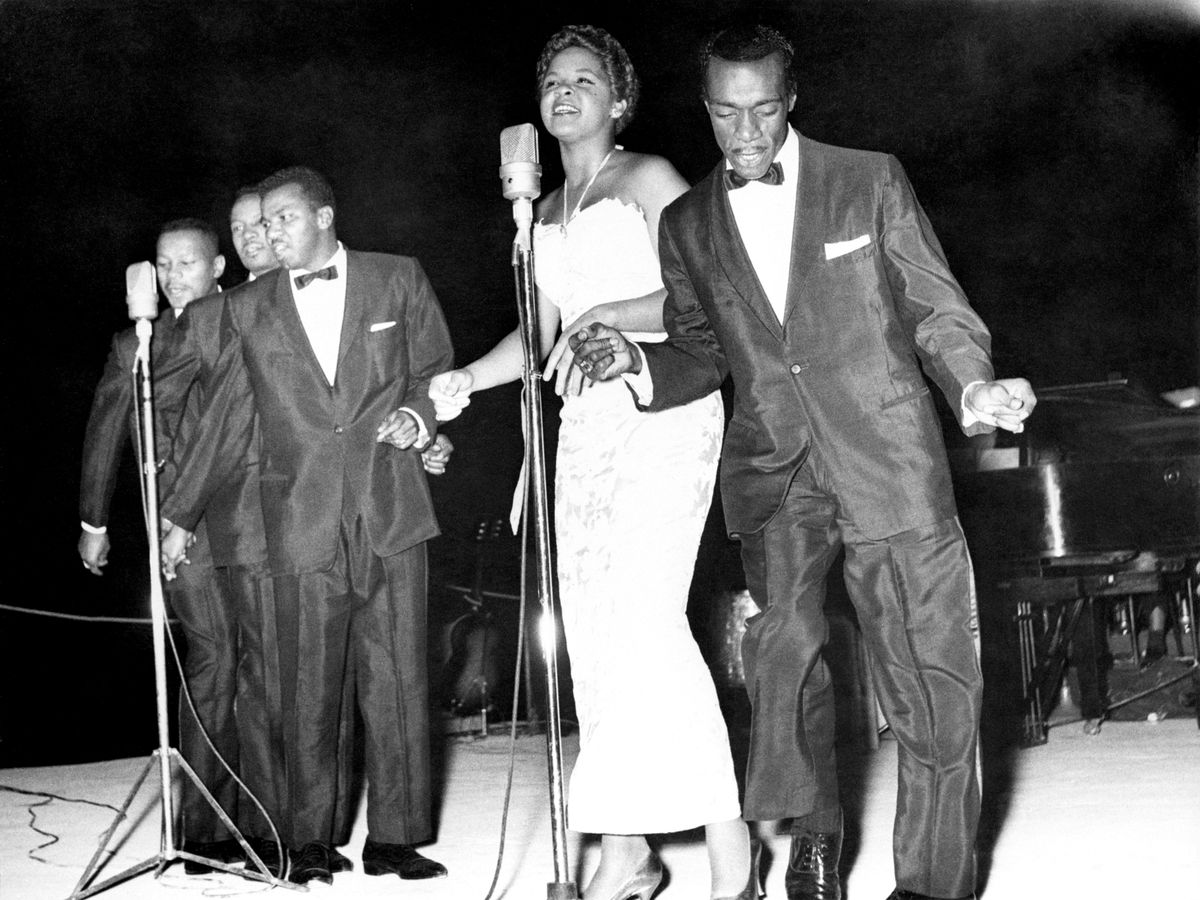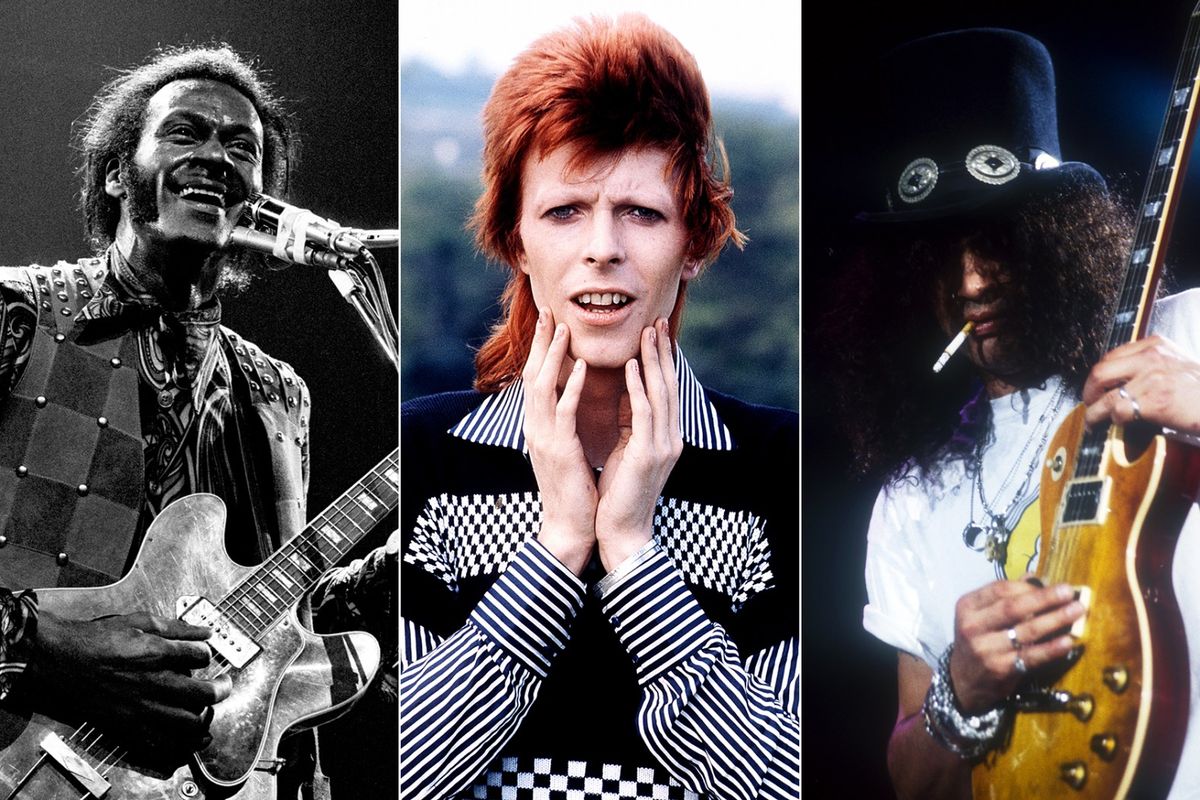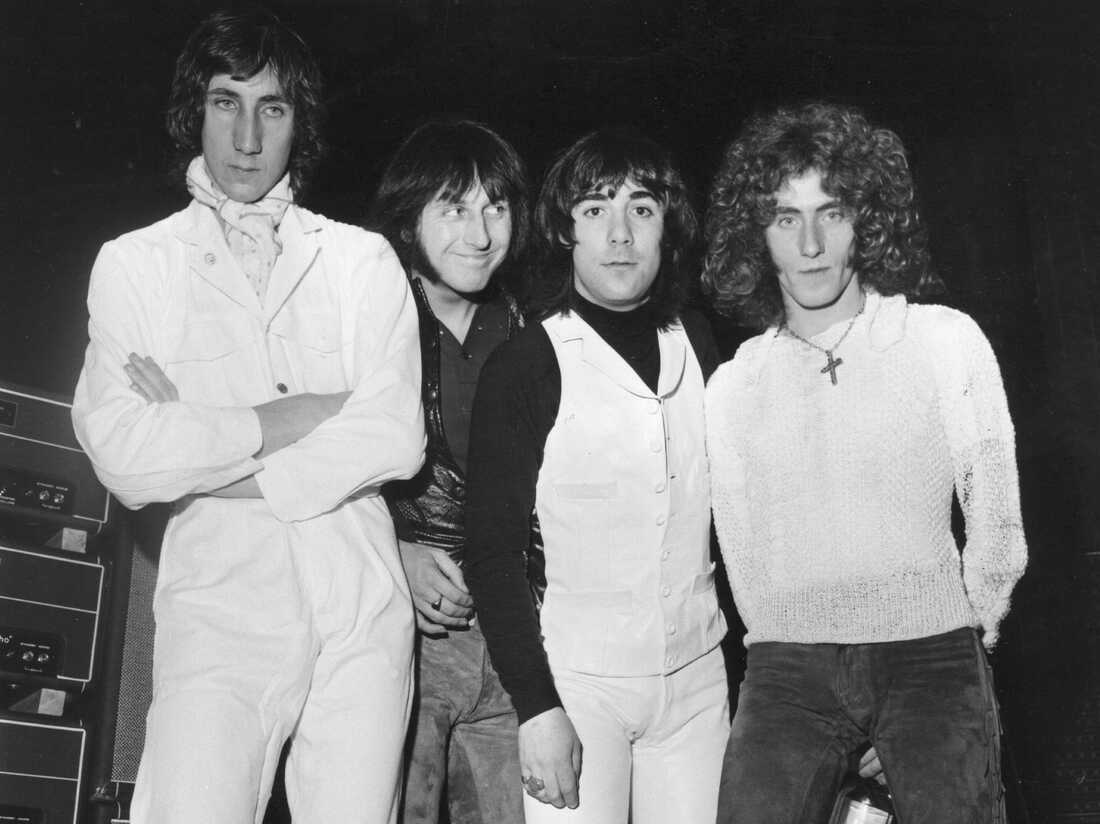

Rock
Why Isn’t Rock Music Popular Anymore
Modified: January 25, 2024
Discover why the popularity of rock music has declined and explore the reasons behind its dwindling fanbase in recent years.
(Many of the links in this article redirect to a specific reviewed product. Your purchase of these products through affiliate links helps to generate commission for AudioLover.com, at no extra cost. Learn more)
Table of Contents
Introduction
In its prime, rock music ruled the airwaves, filled stadiums, and shaped the cultural landscape of generations. From the rebellious energy of Elvis Presley and the Beatles to the raw power of Led Zeppelin and Guns N’ Roses, rock music captured the hearts of millions and became an expression of youth and counterculture. However, in recent years, there has been a noticeable decline in the popularity of rock music. While this doesn’t mean that rock is dead or irrelevant, it does raise the question: why isn’t rock music as popular as it once was?
The world of music is constantly evolving, and new genres and trends emerge over time. As the music industry has shifted towards digital platforms and streaming services, the dominance of rock music has given way to other genres like pop and hip hop. These newer genres have embraced catchy melodies, electronic sounds, and relatable lyrical themes that resonate with a wider audience. Additionally, advancements in technology have made it easier for musicians to create music from their bedrooms and share it with the world, leading to a flood of new artists across various genres.
In this article, we will explore the factors that have contributed to the decline in the popularity of rock music. From changes in music trends to the rise of pop and hip hop, we will uncover the reasons behind this shift in cultural preference. We will also examine the impact of technology and streaming services on the music industry, as well as the lack of mainstream rock icons in recent years. By understanding these factors, we can gain insight into the current state of rock music and its place in today’s musical landscape.
Evolution of Rock Music
To comprehend the decline in the popularity of rock music, it is crucial to acknowledge its evolution throughout history. Rock music emerged in the 1950s as a fusion of various genres, including blues, country, and rhythm and blues. It quickly gained traction, with artists like Chuck Berry and Little Richard bringing a new level of energy and excitement to the music scene.
Throughout the 1960s and 1970s, rock music evolved into different subgenres, fostering diverse styles like psychedelic rock, folk rock, and hard rock. Bands such as Pink Floyd, Bob Dylan, and Led Zeppelin pushed the boundaries of rock, experimenting with new sounds and pushing the limits of what was considered mainstream.
However, as the 1980s rolled around, the music landscape started to change. The rise of MTV brought a new wave of visually appealing music videos that heavily featured pop acts. While rock music still had a presence, it began to share the spotlight with emerging pop stars like Michael Jackson and Madonna.
The 1990s saw the emergence of alternative rock as a dominant force. Bands like Nirvana, Pearl Jam, and Soundgarden captured the angst and dissatisfaction of a generation, resonating with their disillusionment and frustration. The grunge movement became a symbol of rebellion and authenticity, striking a chord with disillusioned youth.
However, as we entered the new millennium, the rock music landscape started to shift. Traditional rock bands faced competition from the rise of pop punk and nu-metal, genres that combined elements of rock and pop with a heavier sound. Acts like Blink-182 and Linkin Park achieved massive popularity, but their music incorporated more mainstream elements that attracted a wider audience.
The 2010s marked a turning point for rock music, with the emergence of indie rock and a resurgence of interest in classic rock. Indie bands like Arctic Monkeys and The Black Keys gained popularity, but their appeal was confined to a niche audience. Meanwhile, classic rock bands like AC/DC and Guns N’ Roses continued to tour and release new music, but they were riding on nostalgia and appealing to an aging fan base.
Overall, the evolution of rock music has seen shifts in style, subgenres, and overall popularity. While it has never completely disappeared from the music scene, it has gradually lost its dominance, making way for other genres and trends that resonate with a broader audience.
Changes in Music Trends
One of the key factors contributing to the decline in the popularity of rock music is the ever-changing landscape of music trends. Music trends constantly evolve, reflecting the tastes and preferences of listeners and the influence of popular culture. As the years have passed, rock music has faced competition from emerging genres that have gained mainstream attention.
In recent years, pop and hip hop have dominated the music industry, capturing the attention of a wide audience. Pop music, with its catchy melodies, infectious hooks, and relatable lyrics, has become a staple of radio airplay and streaming platforms. Artists like Taylor Swift, Ariana Grande, and Ed Sheeran consistently produce chart-topping hits that resonate with listeners across different age groups.
Similarly, hip hop has experienced a surge in popularity, with artists like Drake, Kendrick Lamar, and Cardi B taking center stage. The genre’s emphasis on storytelling, social commentary, and rhythmic beats has struck a chord with younger audiences and reflects the cultural shift towards diverse voices and experiences.
The rise of these genres has led to a decrease in mainstream exposure for rock music. While rock bands still exist and produce exceptional music, they face more competition for attention and chart success. The general public’s musical tastes have shifted towards genres that emphasize catchy hooks and danceable rhythms, leaving less room for the raw power and aggression that rock music offers.
Furthermore, changes in music consumption habits have also had an impact. With the advent of streaming services, listeners have access to an endless array of music at their fingertips. This has allowed for greater exploration of different genres, leading to a more diverse musical landscape. However, it has also contributed to a fragmented audience, with listeners gravitating towards their preferred genres or individual artists.
As a result, rock music, with its broad range of subgenres and styles, has somewhat lost its unified front. Instead of being a dominant force in the music industry, it has become one of many options for listeners to choose from. This shift in music trends and consumption habits has played a role in the decreased popularity of rock music in recent years.
Rise of Pop and Hip Hop
Two genres that have experienced a significant rise in popularity and have contributed to the decline of rock music are pop and hip hop. These genres have captured the attention of the mainstream audience with their diverse appeal and crossover success.
Pop music, with its catchy hooks, upbeat melodies, and relatable lyrics, has become the soundtrack of a generation. Artists like Taylor Swift, Ariana Grande, and Billie Eilish have dominated the charts and garnered massive followings. Pop music’s ability to cater to a wide range of listeners, from teenagers to adults, has allowed it to maintain a strong presence in popular culture.
On the other hand, hip hop has revolutionized the music industry with its unique style, lyrical prowess, and innovative production. Artists such as Drake, Kendrick Lamar, and Cardi B have risen to superstardom, pushing the boundaries of the genre and making it accessible to a wider audience. Hip hop’s ability to address social issues, tell compelling stories, and connect with listeners on a personal level has contributed to its rise in popularity.
The success of pop and hip hop can be attributed to their ability to adapt and evolve with the changing times. These genres consistently incorporate elements of other musical styles, infusing their sound with influences from rock, R&B, electronic, and more. By embracing collaborations and experimenting with new sounds, pop and hip hop have remained fresh and relevant, appealing to a broader range of listeners.
Moreover, the rise of social media and streaming platforms has played a crucial role in the success of pop and hip hop. These genres have thrived in the digital age, utilizing platforms like YouTube, TikTok, and Spotify to connect with fans, showcase their talent, and build a dedicated following. The accessibility and instant gratification provided by these platforms have allowed pop and hip hop artists to gain traction quickly and reach a global audience.
Unfortunately, rock music has struggled to keep up with the fast-paced nature of the digital era. The genre’s traditional structures and heavy reliance on album sales and radio play have made it harder for rock artists to achieve the same level of mainstream success as their pop and hip hop counterparts. While rock bands still have a loyal fan base and continue to produce quality music, their overall reach and influence have diminished in comparison to the dominant presence of pop and hip hop in today’s music landscape.
Influence of Technology
The rise of technology has had a profound impact on the music industry as a whole, including the decline in the popularity of rock music. Advances in recording, production, and distribution have fundamentally changed the way music is created, consumed, and shared.
Digital recording software and home studio setups have made it more accessible and affordable for musicians to produce high-quality music. In the past, the recording process often required significant financial investment and access to professional studios. However, with tools like Pro Tools and GarageBand, artists can create studio-quality music from the comfort of their own homes. This has led to an explosion of new artists across various genres, flooding the music scene with an overwhelming amount of content.
Streaming services have also transformed the way music is consumed. Platforms like Spotify, Apple Music, and YouTube have made music more easily accessible to a global audience. While this has created opportunities for artists to reach a wider fan base, it has also led to a highly saturated marketplace. Listeners now have an almost infinite selection of music at their fingertips, making it more challenging for rock music to stand out amidst the vast array of genres and subgenres available.
Additionally, the rise of social media has played a significant role in shaping music trends and the way music is discovered. Platforms like Instagram, TikTok, and Twitter have become crucial promotional tools for artists. They provide a direct line of communication between artists and fans, allowing for greater engagement and interaction. However, these platforms also prioritize shorter, attention-grabbing content, which tends to align more with the aesthetics and sounds of pop and hip hop. This shift towards visual-based content has made it harder for rock music, which often relies on longer tracks and album-focused releases, to capture the same level of attention and traction.
Furthermore, the ease of digital distribution and online platforms has led to a decline in physical album sales. In the past, rock bands could rely on album sales and radio play to gain exposure and build a fan base. However, with the decline of physical sales and the shift towards streaming and digital platforms, the metrics for success have changed. Rock bands face the challenge of adapting to this new landscape, where chart success is determined by a combination of streaming numbers, social media presence, and online engagement.
While technology has undoubtedly leveled the playing field and allowed for greater accessibility to music creation and distribution, it has also contributed to a more fragmented and competitive music industry. Rock music, with its focus on live performances and the visceral experience of watching a band play, has faced challenges in standing out in the digital realm. However, it is worth noting that technology has also provided opportunities for rock bands to connect with their fan base authentically, whether through live-streamed performances, immersive virtual experiences, or engaging social media presence.
Impact of Streaming Services
The advent of streaming services has revolutionized the music industry and significantly impacted the popularity of rock music. Platforms like Spotify, Apple Music, and YouTube have changed the way people consume and discover music, influencing the rise and fall of different genres.
Streaming services offer listeners a vast catalog of music at their fingertips, allowing them to explore different genres and discover new artists with ease. However, these platforms also operate on algorithms that tailor recommendations to users based on their listening habits. This can create an echo chamber effect, where listeners are primarily exposed to music within their preferred genres. As a result, rock music, which may have a more dedicated fan base but may not be as popular among the mainstream public, can struggle to gain visibility and reach new listeners.
Furthermore, streaming services often prioritize playlists and curated content, which tend to feature popular songs from popular genres like pop and hip hop. These playlists have a significant influence on discoverability and exposure for artists. This can put rock music at a disadvantage, as it may not fit the mold or criteria of the trending playlists, resulting in fewer opportunities for exposure and growth.
Moreover, the revenue model of streaming services has also had an impact on the viability of rock bands. The pay-per-stream system often rewards artists based on the number of streams they accumulate. With rock music often having longer tracks and albums as opposed to shorter, radio-friendly pop songs, it can be more challenging for rock bands to rack up the same number of streams compared to artists in other genres. This can create a disparity in income and financial stability for rock musicians, making it more difficult for them to sustain their careers.
Despite these challenges, streaming services have also opened up new avenues for rock artists to connect with their fan base and build a dedicated following. Independent rock artists have the opportunity to release music directly to these platforms without the need for a traditional record label. They can cultivate fan communities, engage with listeners through social media, and promote their music on platforms like YouTube. This direct access allows for a more intimate connection between artists and fans, bypassing traditional gatekeepers and giving rock music a chance to thrive on its own terms.
It is also important to note that while streaming services may have contributed to the decline in the popularity of rock music, they have also created a more diverse and inclusive musical landscape. Listeners now have access to a wide range of genres and subgenres, allowing for the discovery and appreciation of music that may have been previously overlooked. While rock music may not dominate the charts as it once did, it still holds a special place in the hearts of its dedicated fan base and continues to evolve and influence new generations of rock musicians.
Lack of Mainstream Rock Icons
Another factor contributing to the decline in the popularity of rock music is the lack of prominent rock icons in recent years. During the heyday of rock music, there were numerous larger-than-life personalities and bands that captured the imagination of millions.
Artists like Elvis Presley, The Beatles, Led Zeppelin, and Queen not only revolutionized music but also became cultural icons, drawing massive followings and influencing generations of musicians. These rock icons not only had exceptional musical talent but also had a charismatic stage presence and a mystique that captivated audiences.
However, in recent years, there has been a noticeable absence of new rock icons who possess the same level of impact and influence. While there are undoubtedly talented rock bands and artists, few have managed to attain the same level of mainstream success and recognition as their predecessors.
One reason for this lack of mainstream rock icons could be attributed to the changing dynamics of the music industry. With the rise of streaming services and the increasing emphasis on singles rather than full albums, the music industry has become more focused on immediate hits and viral sensations. This shift has made it more difficult for rock bands, with their often introspective and layered music, to capture the attention and interest of the mainstream audience.
Additionally, the rise of celebrity culture and social media has contributed to a shift in how musicians are perceived and elevated to iconic status. In the past, rock icons were shrouded in an aura of mystery and mystique, making them larger than life figures that fans idolized. Today, celebrities are both musicians and influencers, and their rise to fame is often propelled by their social media presence and public image rather than solely their musical talent.
Furthermore, the changing tastes and preferences of the audience play a significant role in the lack of mainstream rock icons. Pop and hip hop music, with their infectious melodies, dynamic performances, and relatable lyrics, have become more appealing to a broader range of listeners. The mainstream audience has shifted its focus towards genres that prioritize immediacy, danceability, and catchy hooks, leaving rock music with a smaller, yet dedicated, fan base.
However, it is essential to note that rock music still has a strong presence in niche communities and continues to influence musicians across various genres. Many talented rock bands and artists are making impactful music and garnering critical acclaim, even if they may not reach the same level of commercial success as past rock icons.
The absence of mainstream rock icons does not diminish the significance and relevance of rock music as a whole. It remains a powerful and influential genre that continues to inspire and resonate with fans. The impact of past rock icons can still be felt in the music being created today, and rock music will continue to evolve and adapt to the ever-changing musical landscape.
Shifting Cultural Preferences
Cultural preferences play a crucial role in shaping the popularity of different music genres, and the decline in the popularity of rock music can be attributed, in part, to shifting cultural tastes and trends.
In today’s fast-paced and interconnected world, cultural tastes and trends are constantly evolving. What was popular and influential in the past may not necessarily resonate with the current generation. As society goes through social, political, and cultural changes, so do its artistic expressions and preferences.
Rock music emerged during a time of rebellion and counterculture, with its roots in the 1950s and 1960s reflecting the sentiments of the youth of that era. However, as society has evolved and gone through different movements, the cultural zeitgeist has shifted towards new forms of expression.
Genres like pop and hip hop have gained prominence due to their ability to connect with and reflect the experiences and values of younger generations. Pop music, with its catchy and accessible nature, often embodies the desires and dreams of the masses, while hip hop encapsulates the individual stories and struggles of marginalized communities, making it particularly appealing to a diverse and inclusive audience.
The preferences of the younger listeners are not limited to just music; they extend to related aspects such as fashion, lifestyle, and social media trends. Pop and hip hop have aligned themselves with these cultural elements, creating a symbiotic relationship where the music and the accompanying culture reinforce each other.
Moreover, the visual nature of pop and hip hop culture has also contributed to their popularity. These genres emphasize music videos, fashion, and visual storytelling, resonating with the visually-driven nature of contemporary media consumption. In contrast, rock music, with its focus on live performances, has struggled to captivate the attention of a generation that demands constant visual stimulation.
Additionally, cultural preferences are shaped by societal values and norms. As societal attitudes towards gender, race, and identity have evolved, so have the musical genres that reflect and speak to these experiences. Pop and hip hop have been at the forefront of addressing and challenging social issues, making them more relevant and resonant in the eyes of younger audiences.
The decline in the popularity of rock music does not diminish its significance or artistic value. Rock music still carries a legacy of powerful storytelling, emotional depth, and musical skill. It continues to have a passionate following and a rich subculture that appreciates its authenticity and energy.
As cultural preferences continue to evolve, it is likely that new forms of music will emerge, capturing the spirit of the times and reflecting the values and experiences of future generations. The cyclical nature of music trends suggests that rock music may experience a revival or shift in popularity in the future, as cultural preferences continue to shift and new generations discover and reinterpret the genre.
Conclusion
Rock music, once the dominant force in the music industry, has seen a decline in popularity in recent years. The reasons for this decline are multifaceted and include the evolution of music trends, the rise of pop and hip hop, the influence of technology and streaming services, the lack of mainstream rock icons, and shifting cultural preferences.
The changing landscape of music trends has seen a shift towards genres like pop and hip hop, which better cater to the preferences of contemporary audiences. These genres offer catchy melodies, relatable lyrics, and dynamic performances, resonating with a broader range of listeners. Moreover, the rise of streaming services has created a highly saturated marketplace, making it more challenging for rock music to stand out and gain mainstream exposure.
Additionally, the lack of prominent rock icons in recent years has contributed to the decline in rock music’s popularity. These icons played a crucial role in shaping the cultural landscape and capturing the imagination of millions. With the rise of celebrity culture and social media, the way musicians are perceived and elevated to iconic status has changed, making it harder for new rock icons to emerge.
Shifting cultural preferences also play a significant role in the decline of rock music. The desires and values of younger generations have favored genres like pop and hip hop, which connect with their experiences and reflect their evolving societal values. The visual and cultural elements associated with these genres have further solidified their appeal.
Despite its decline in popularity, rock music still holds a special place in the hearts of its dedicated fan base, and its impact on music and culture cannot be denied. It continues to evolve and inspire new generations of rock musicians who carry on its legacy.
In conclusion, the decline in the popularity of rock music can be attributed to various factors, but it is important to remember that music trends are cyclical and ever-changing. While rock music may not dominate the mainstream charts as it once did, its influence and significance will always be felt, and it will continue to captivate audiences who appreciate its raw energy, authentic storytelling, and timeless appeal.











